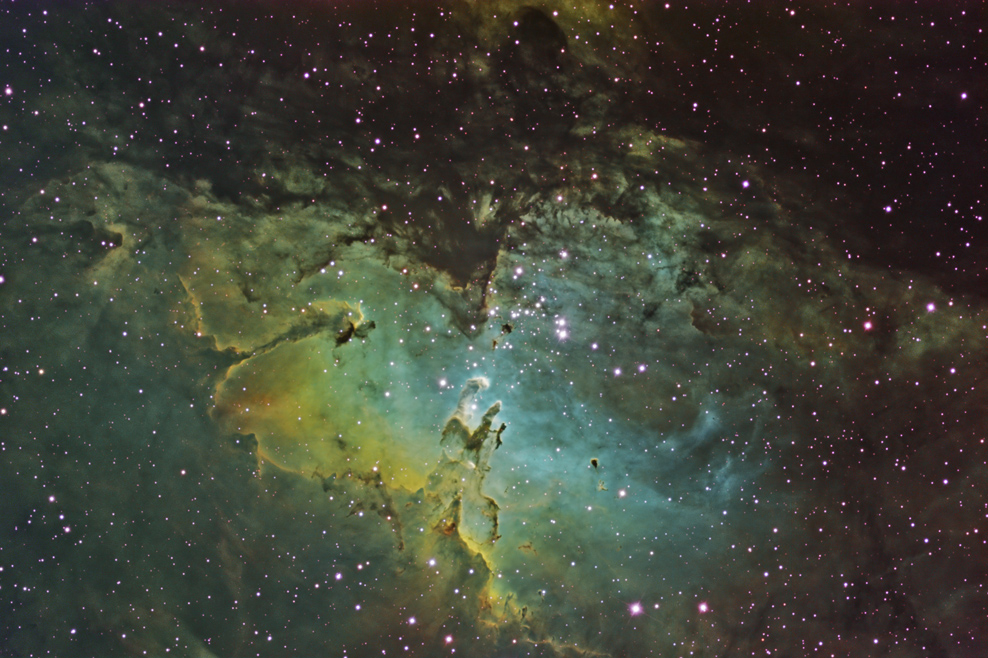
Eagle Nebula: This field contains most of the Eagle Nebula, which consists of an open star cluster (catalogued as M16), and an emission nebula (catalogued as IC4703).
At the center of this field are the gas clouds made famous in the Hubble photo entitled "Pillars of Creation." Another piece
of this image that has been imaged by Hubble is the almost-horizontal spire to the left of the Pillars of Creation;
this feature is 9.5 light years long. To see a little display of the two Hubble photos (the original, iconic one taken in 1995, and the more recent one--in visible light--taken in 2014,
and a full resolution crop of mine (with all three shown at the same image scale), click here.
I previously imaged this area as part of a two-panel, wide-field mosaic with my smaller scope (it shows up best in the
highest-resolution version; it's really small). This area is in the heart of the larger, bird-shaped nebula at the upper left of that image.
These are part of a large star-forming region, located in the Sagittarius arm of the Milky Way. There are a number of what look like black blobs floating around in the field; astronomers think
that these (so-called "Bok globules") are "protostars," and may congeal into stars in time. There is a lot of cold
hydrogen gas in this field, showing up in this set of photos as the dark clouds (dark because they don't allow light to pass through them; the stars you see superimposed onto them are between them and us).
This region is about 7,000 light years away, and shines at approximately apparent magnitude 8. The cluster is estimated to be 5.5 million years old, and the nebula a bit older.
Copyright 2015 Mark de Regt